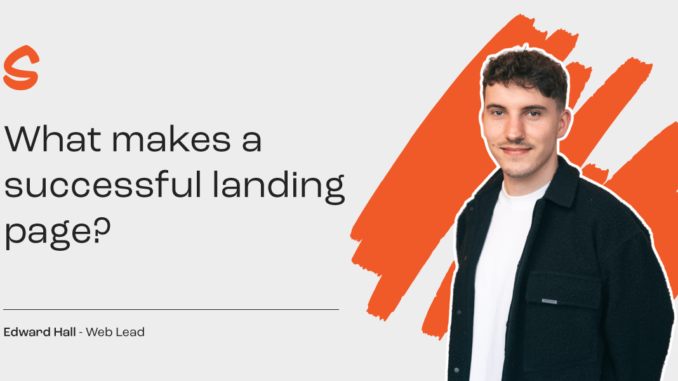
Most of the time people don’t understand the difference between a landing page and website. Well… here’s a short explanation.
The purpose of a website is to display content for exploration in a visually aesthetic way. Allowing the user to take their own approach through the content.
A landing page is a marketing tool (single web page) which aims to generate leads or sales for your business or brand. Whatever the purpose of the page, the user should be taken on a UX journey that funnels them to an enquiry or purchase.
So, what makes a successful landing page?
Landing pages are key to any business to increase conversion rates. It’s vital you display content in a way that gives a clear message to the user which will then lead to an enquiry / purchase from as few clicks as possible. Here are a few points that you should consider…
A solid hero section
Like any website, the hero section is the most important part of any site because it’s the first thing people will see. It has to give a convincing and lasting impression. To have a successful hero section you can include the following:
1. Impactful copy
What is it you’re selling to the customer? Whether it be a product or service, the headline has to be clear and straight to the point – you can even utilize dynamic keyword insertion here to make the headline hyper relevant to the user. Underneath the heading would be sub headline, this needs to explain why and what you will get from this. Finally, a strong call to action explaining what the user needs to do next, it could be signing up to a newsletter, pre-ordering an unreleased product or simply getting in touch by filling out a form.
2. Images that are relevant
People read from left to right so you should generally start with copy first before the image. Whatever the purpose of the page is, the imagery should relate to what is being highlighted or displayed in that section.
3. Trust
To add trust, you can simply add Google reviews, Trustpilot, customer reviews or examples of other partners you work with. Immediately you should be able to see this without having to scroll, so it’s essential to have these above the fold.
Powerful Stats
Whatever your goal is you should always include powerful statistics, this gives you a great online reputation and sets you apart from your competitors. It also shows previous consumers have experienced positive outcomes.
Clear call to actions that are visible throughout the page
The purpose of a landing page is to convert sales or leads; therefore, you should always have multiple calls-to-action present.
You can display these in various ways to grab the user’s attention:
Contact Form
For lead-based pages, an enquiry form should be easy to access to get that conversion. A simple name, email, phone number and message should be enough to get as much information of your potential customer before contacting them directly. Keep this form’s size to a minimum, we don’t want to put potential customers off – lower the barrier to entry.
A/B Testing
In order to have a successful landing page you need to have variations. You can then A/B test to see which journey is more converting to your business goals.
As Superfly we’ve used a whole range of landing page platforms, but currently our front-runner is Instapage. This helps us easily transform landing pages from design to reality. You can monitor on Instapage which page or variation is performing better. You may also want to use a heat map plugin (or leverage a higher subscription tier) which collects data to show what areas of the page users are immediately drawn to.
Social Proof
As mentioned above, social proof is a key factor you should have included throughout the page. How do you make yourself trustworthy? Here are some examples:

Leave a Reply